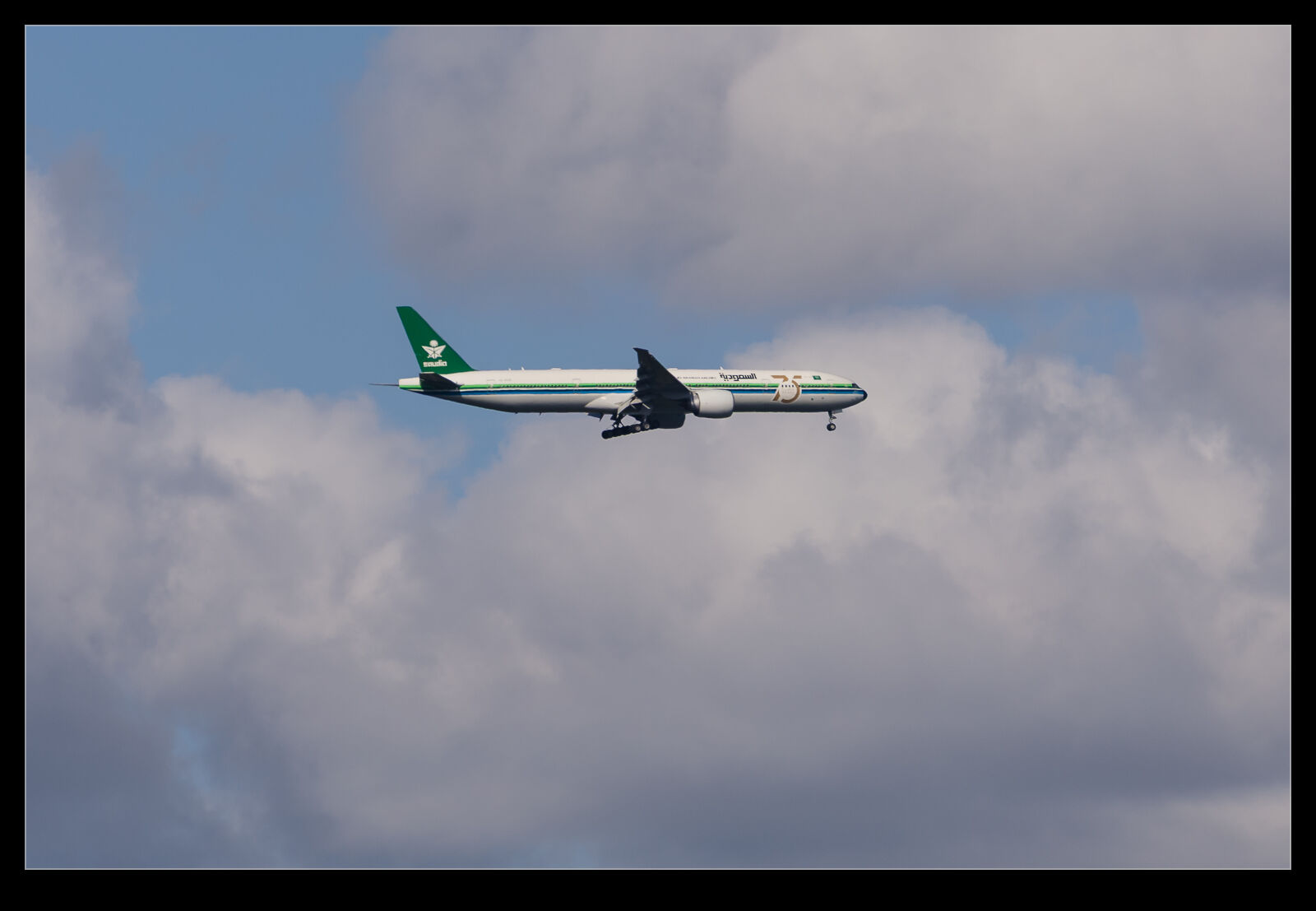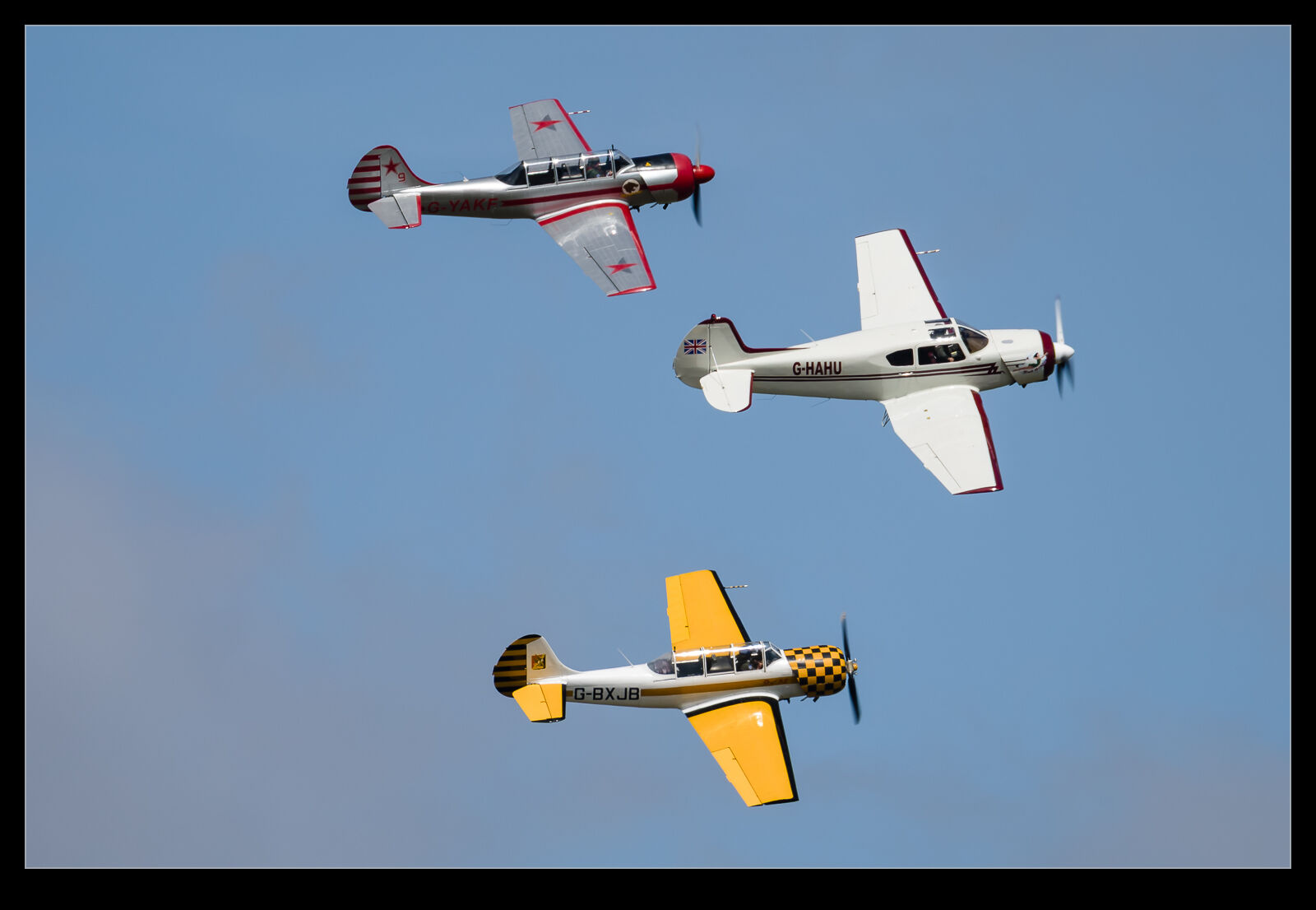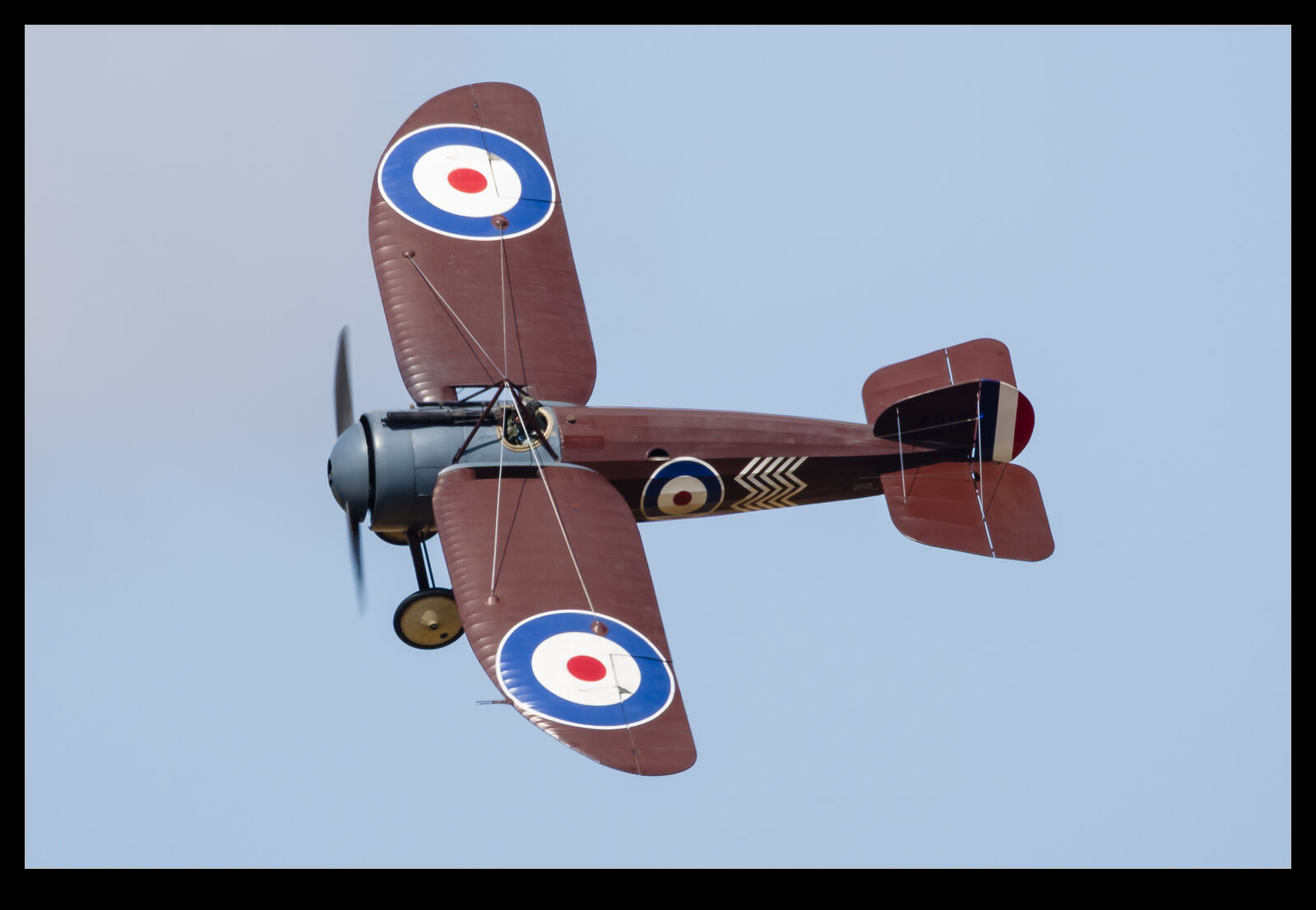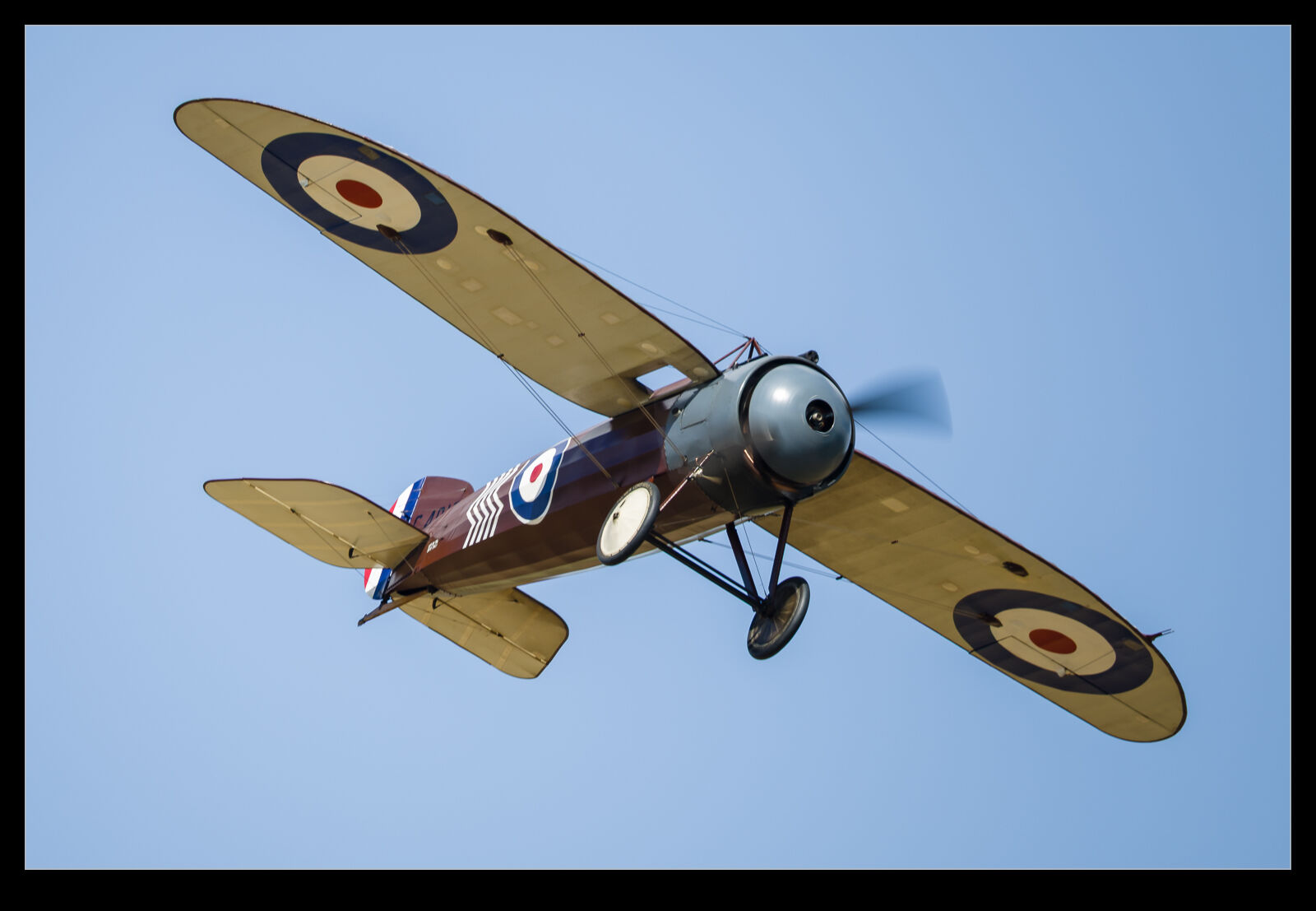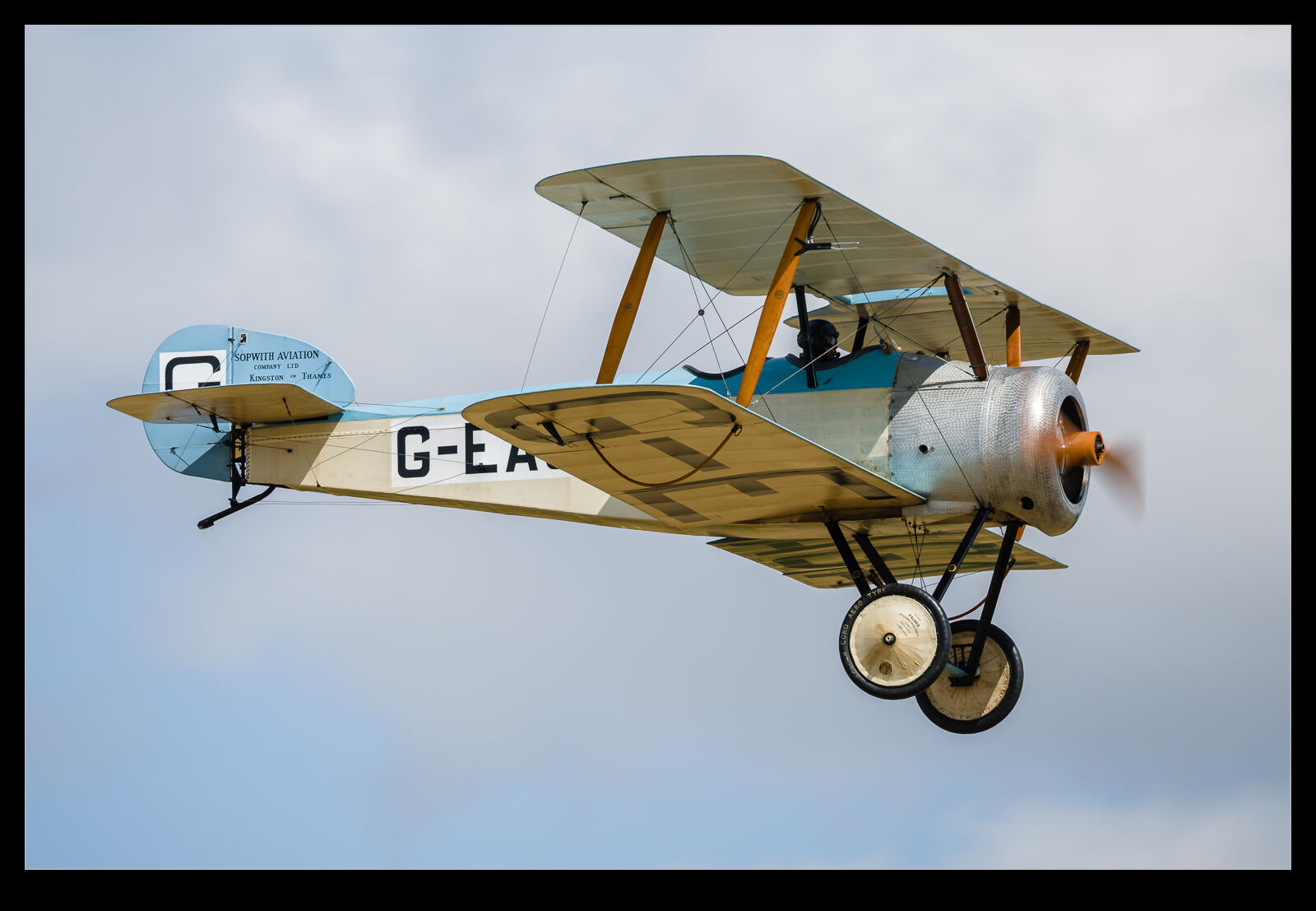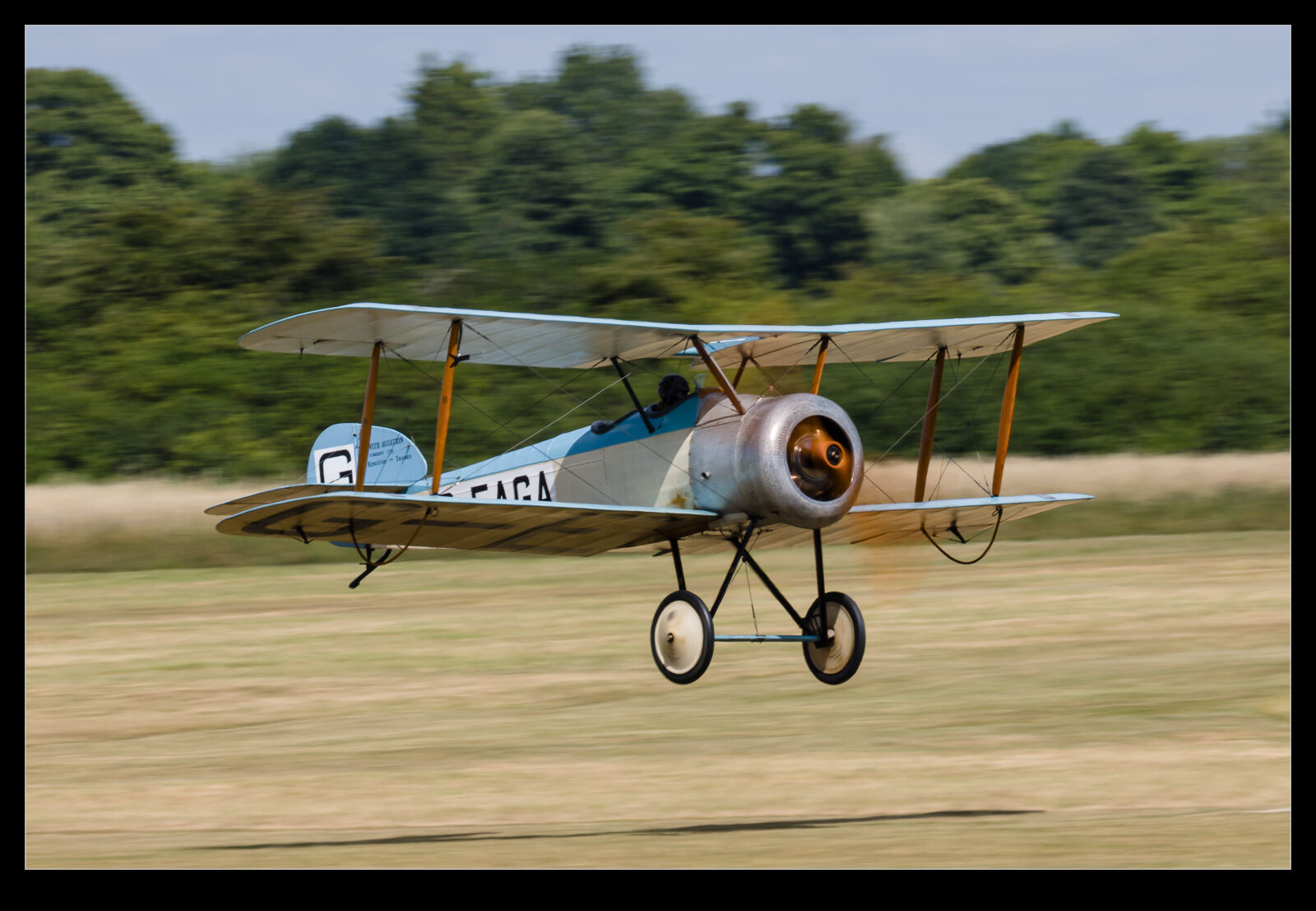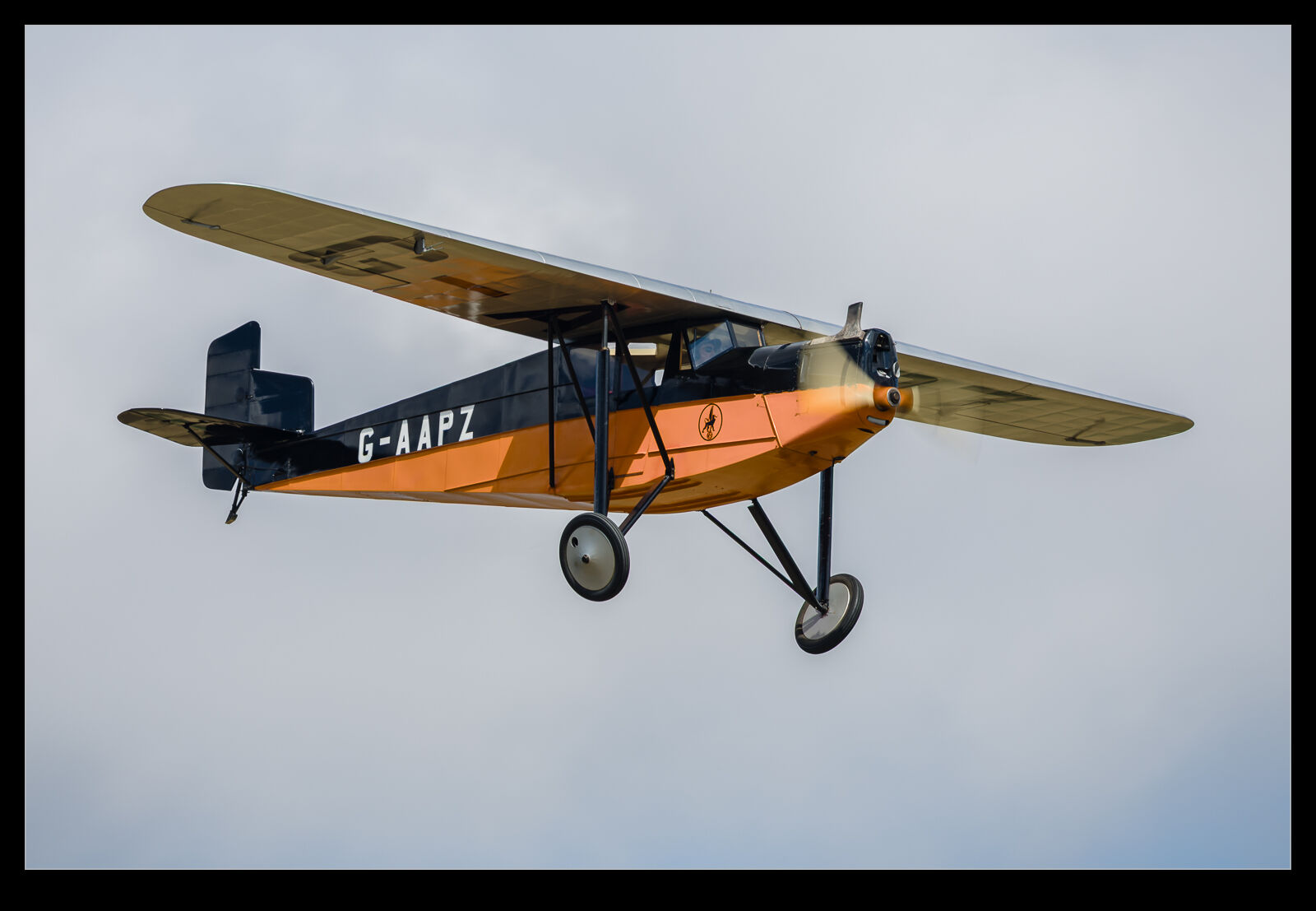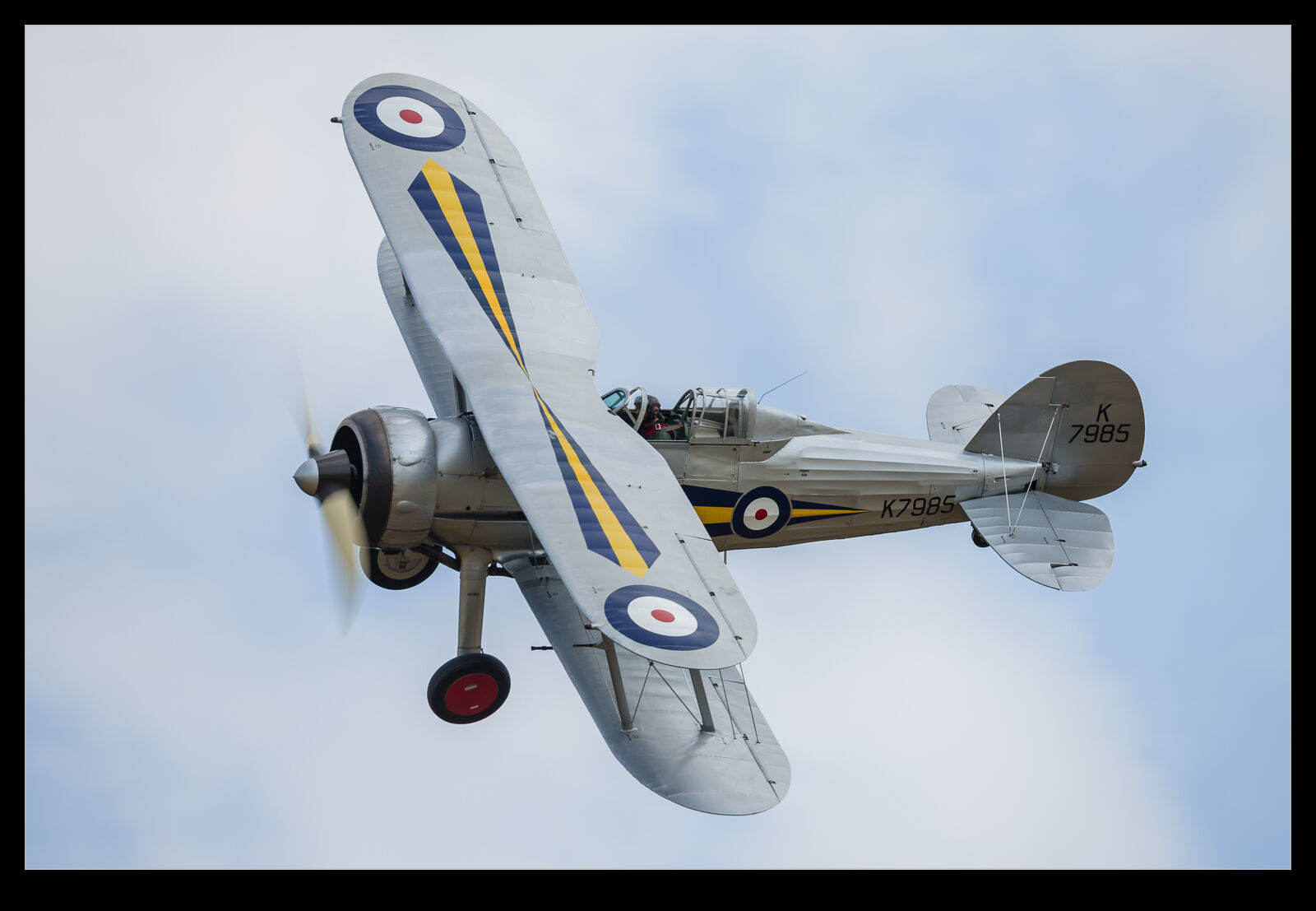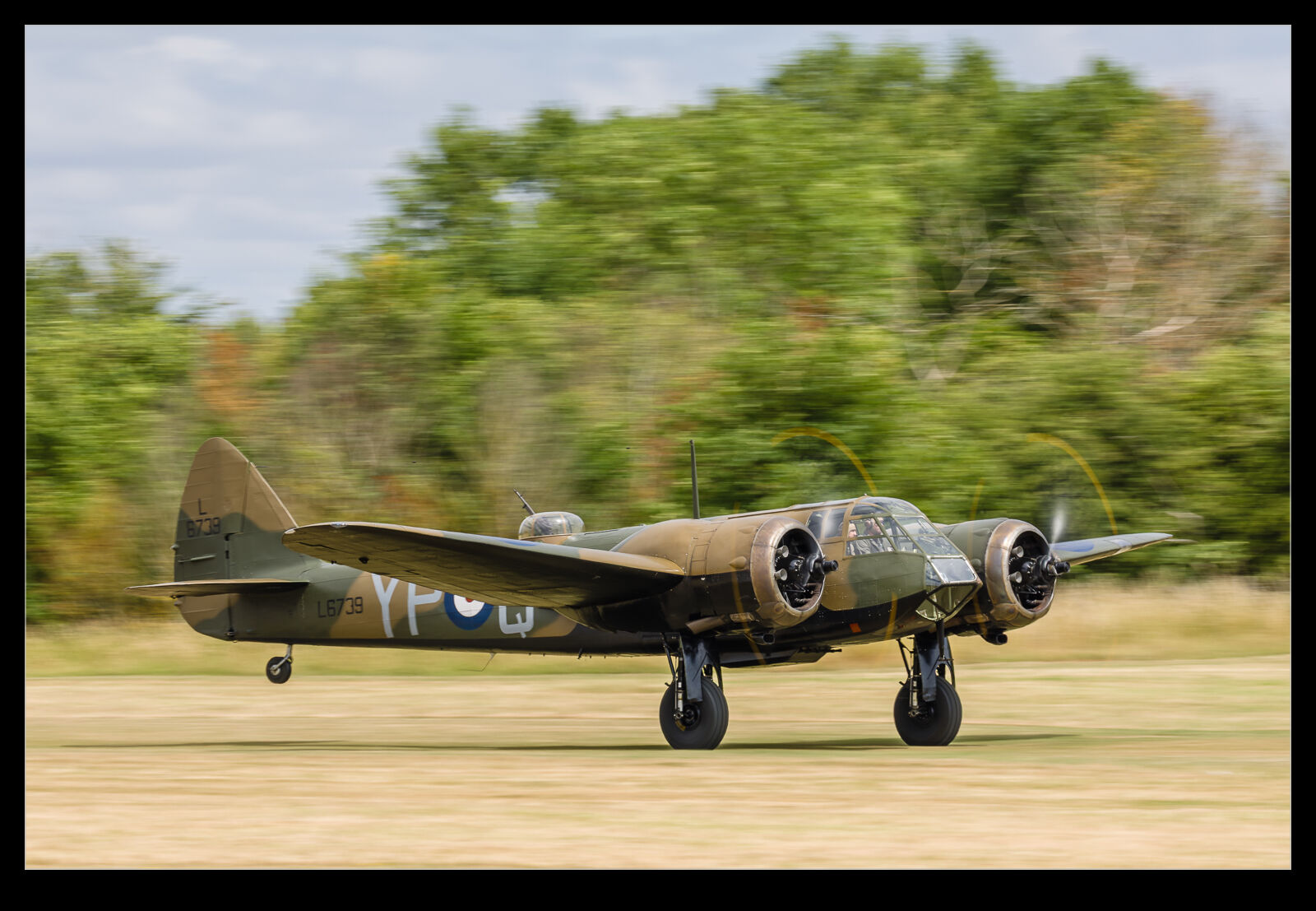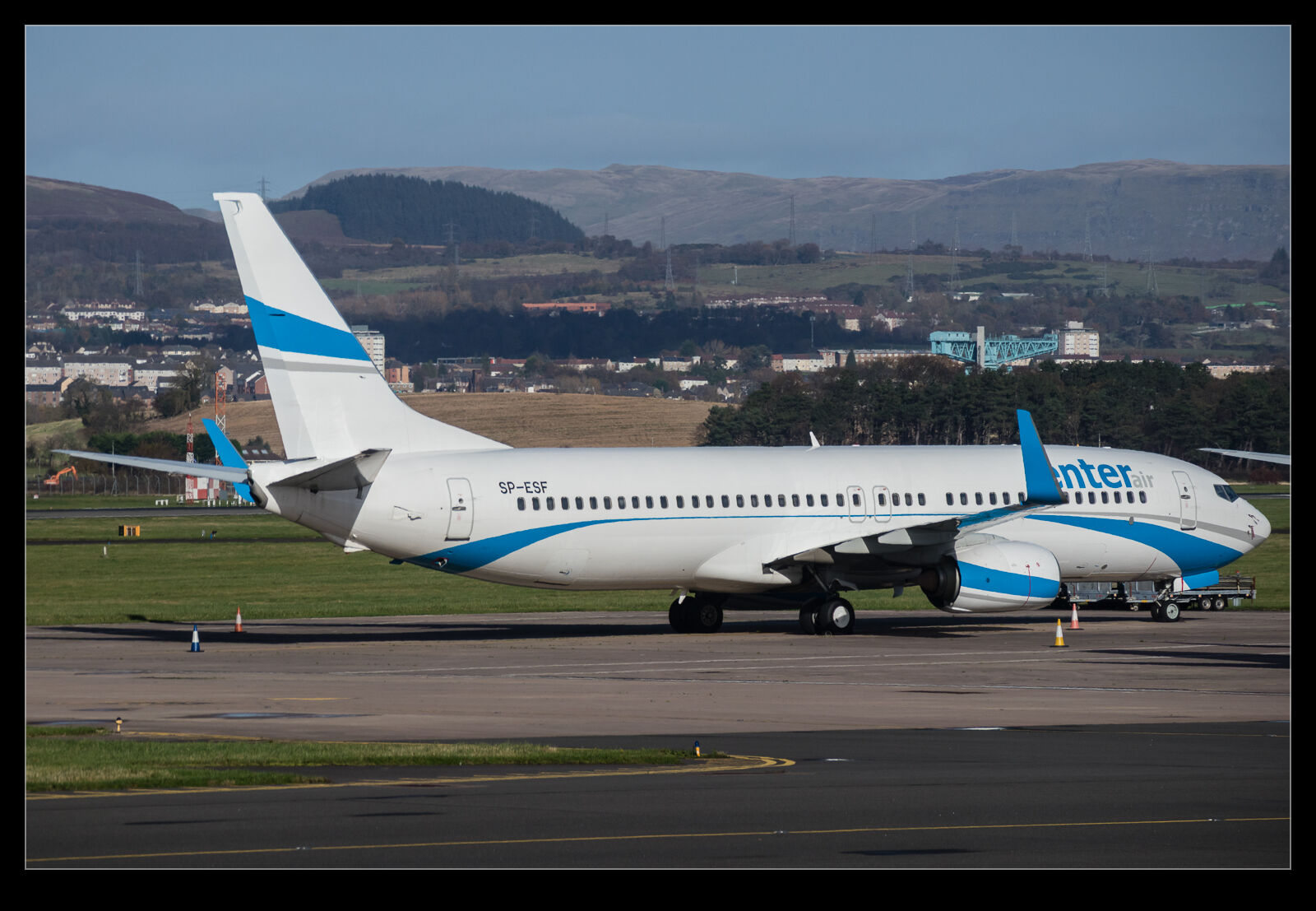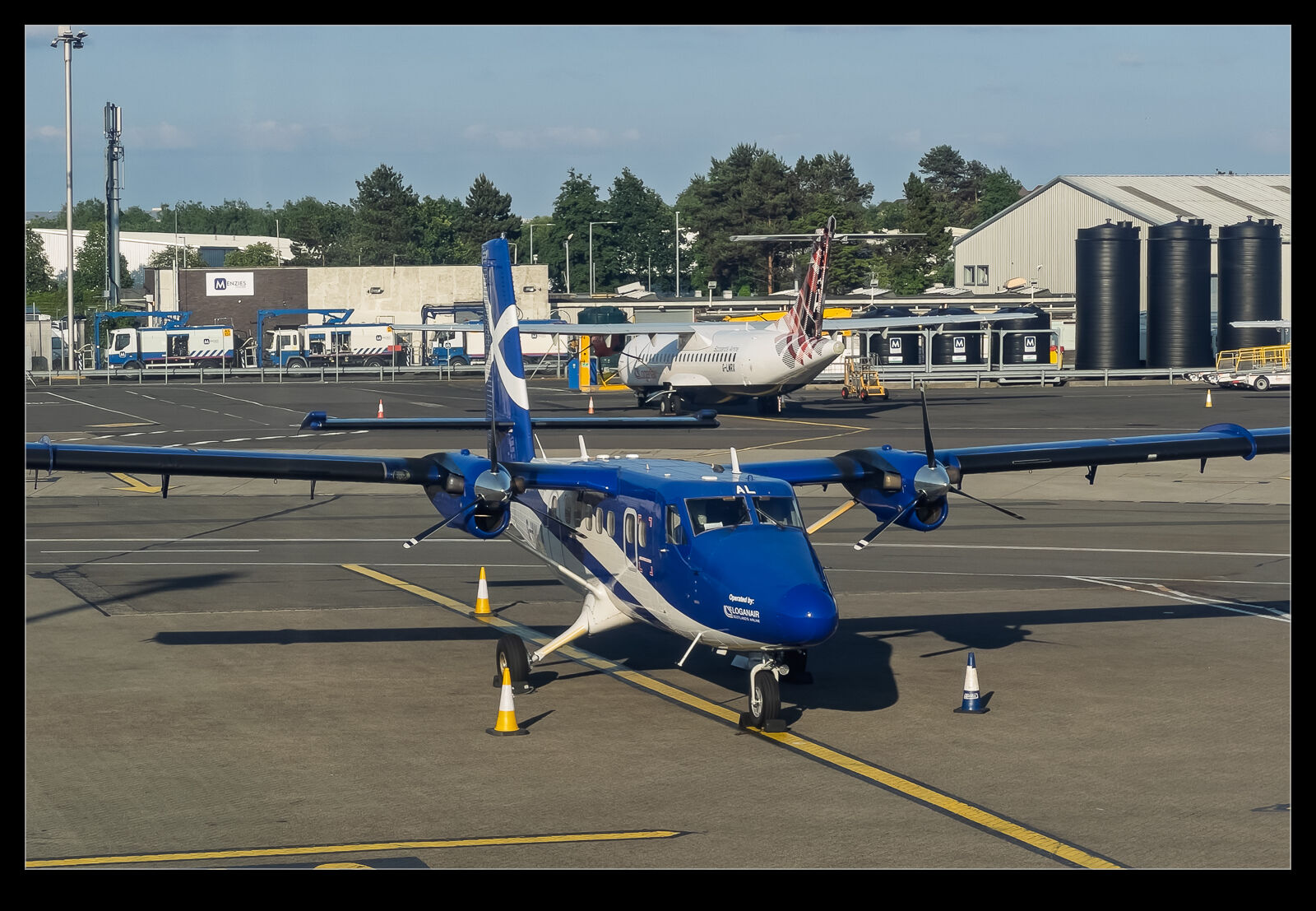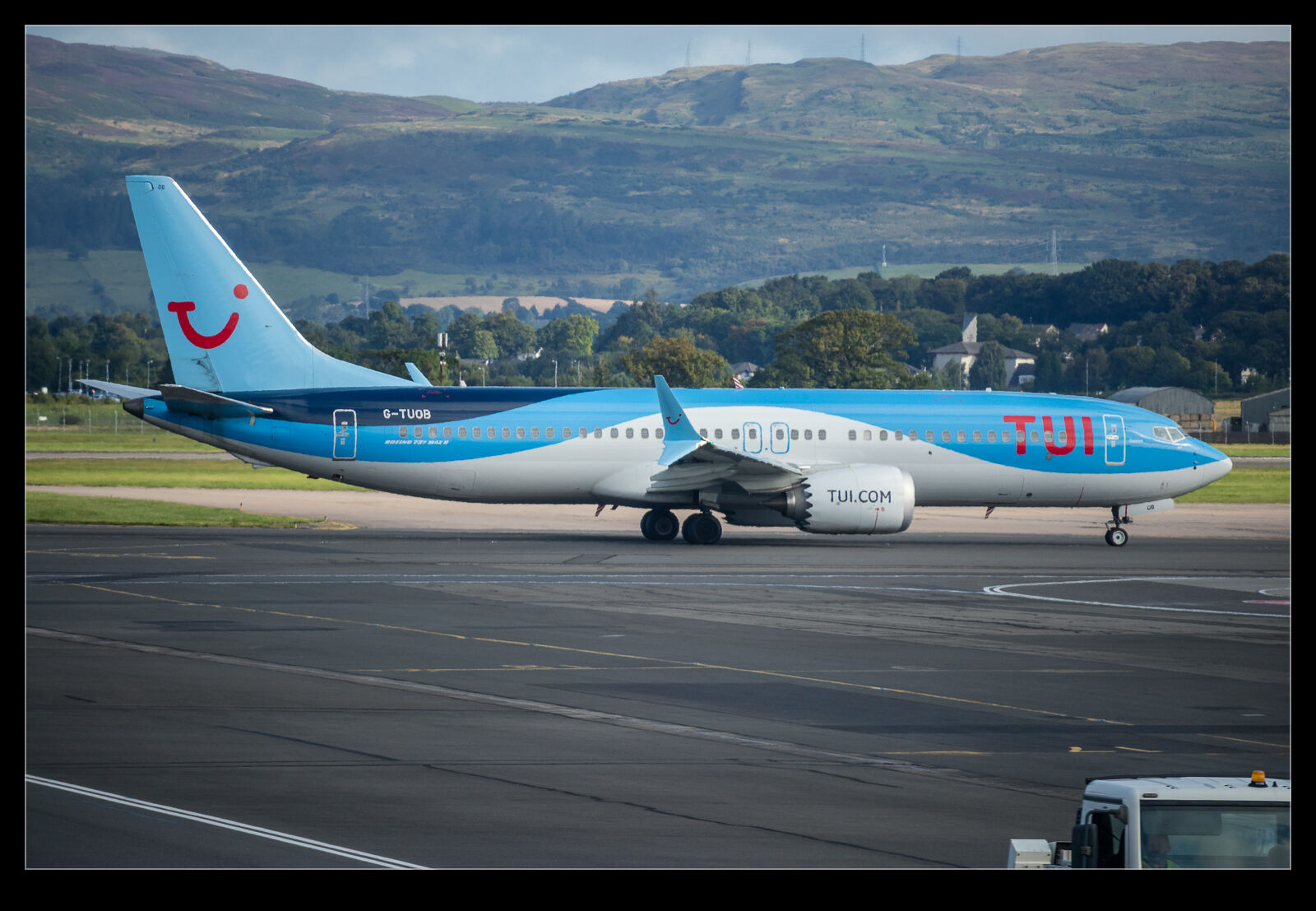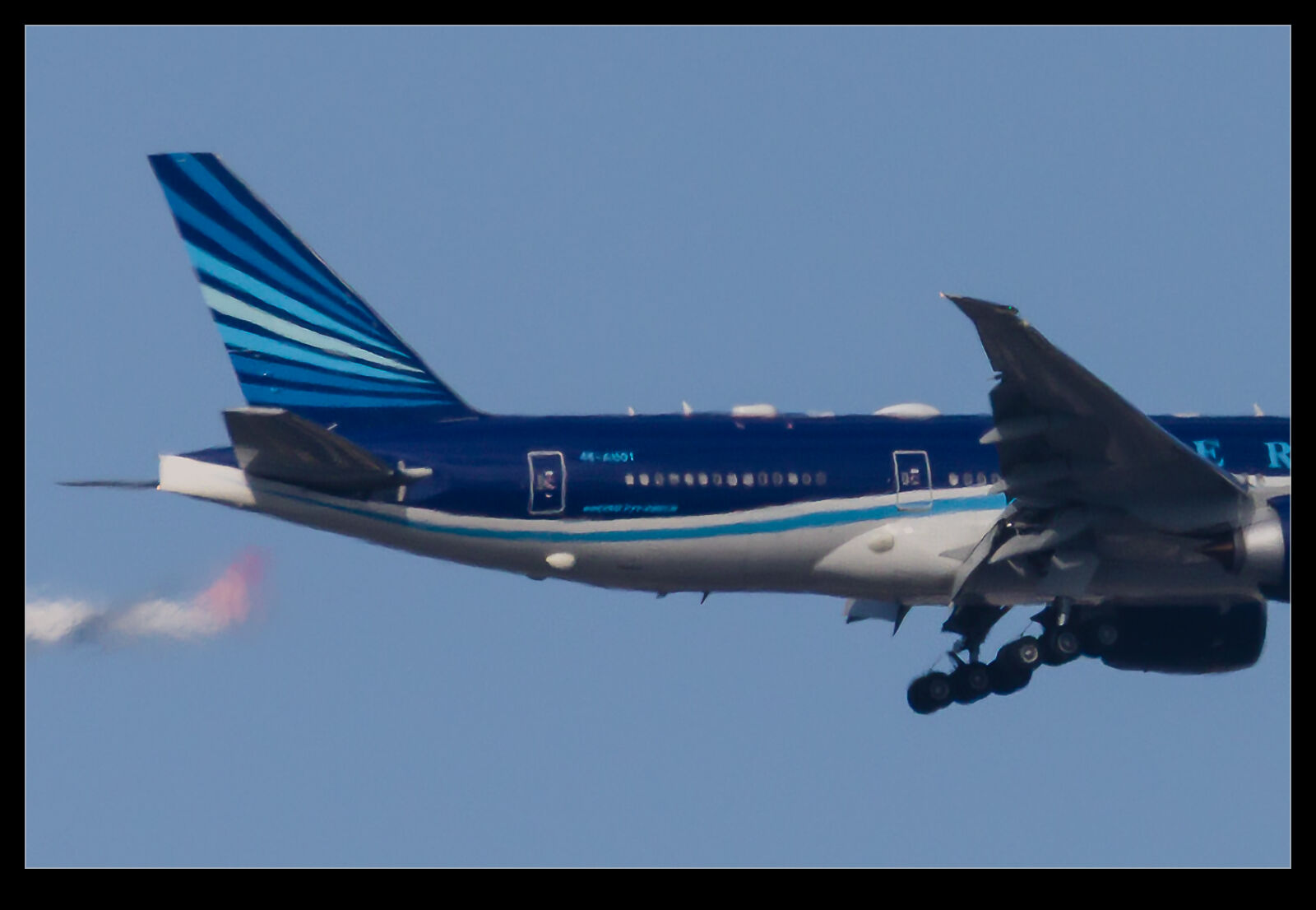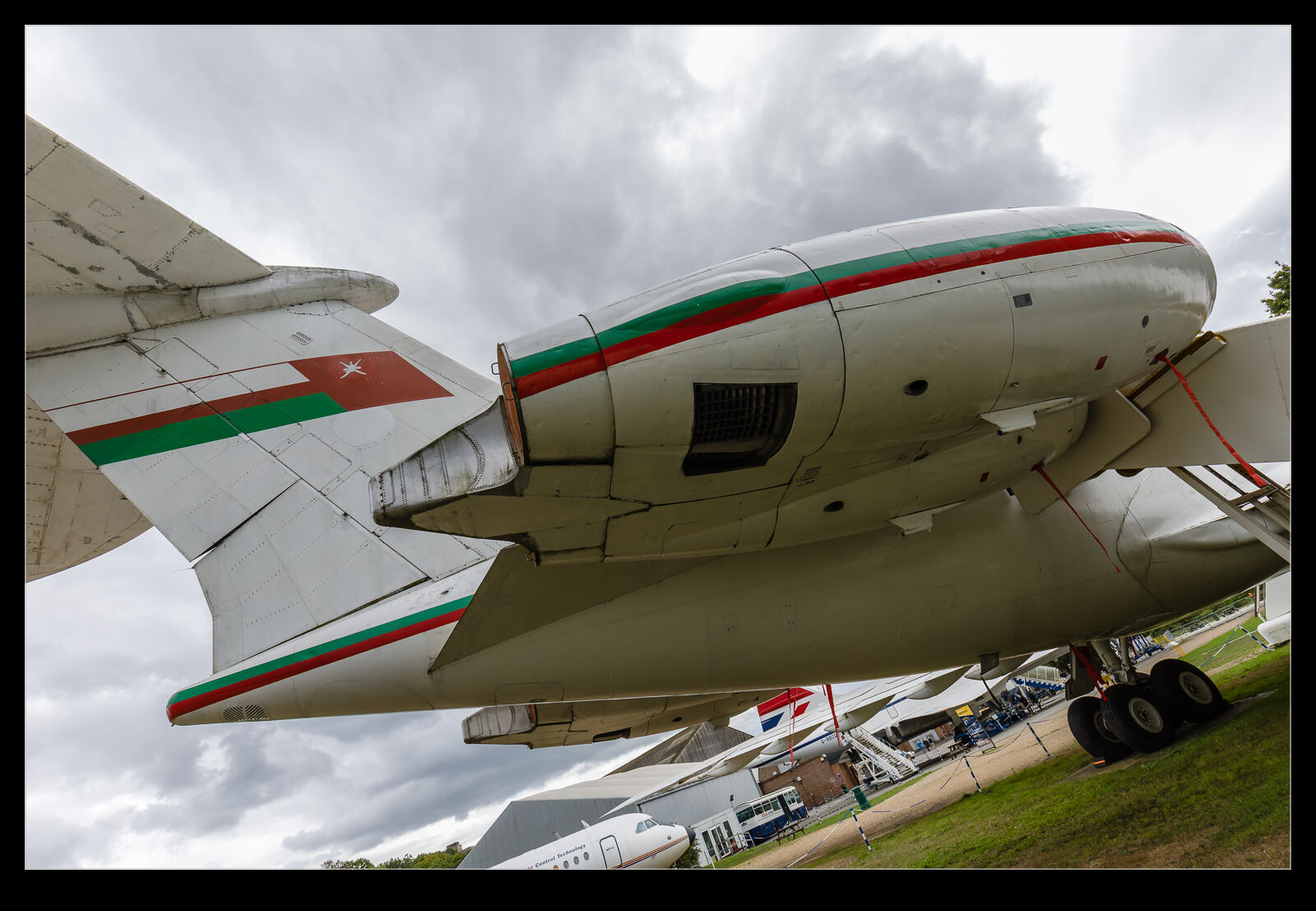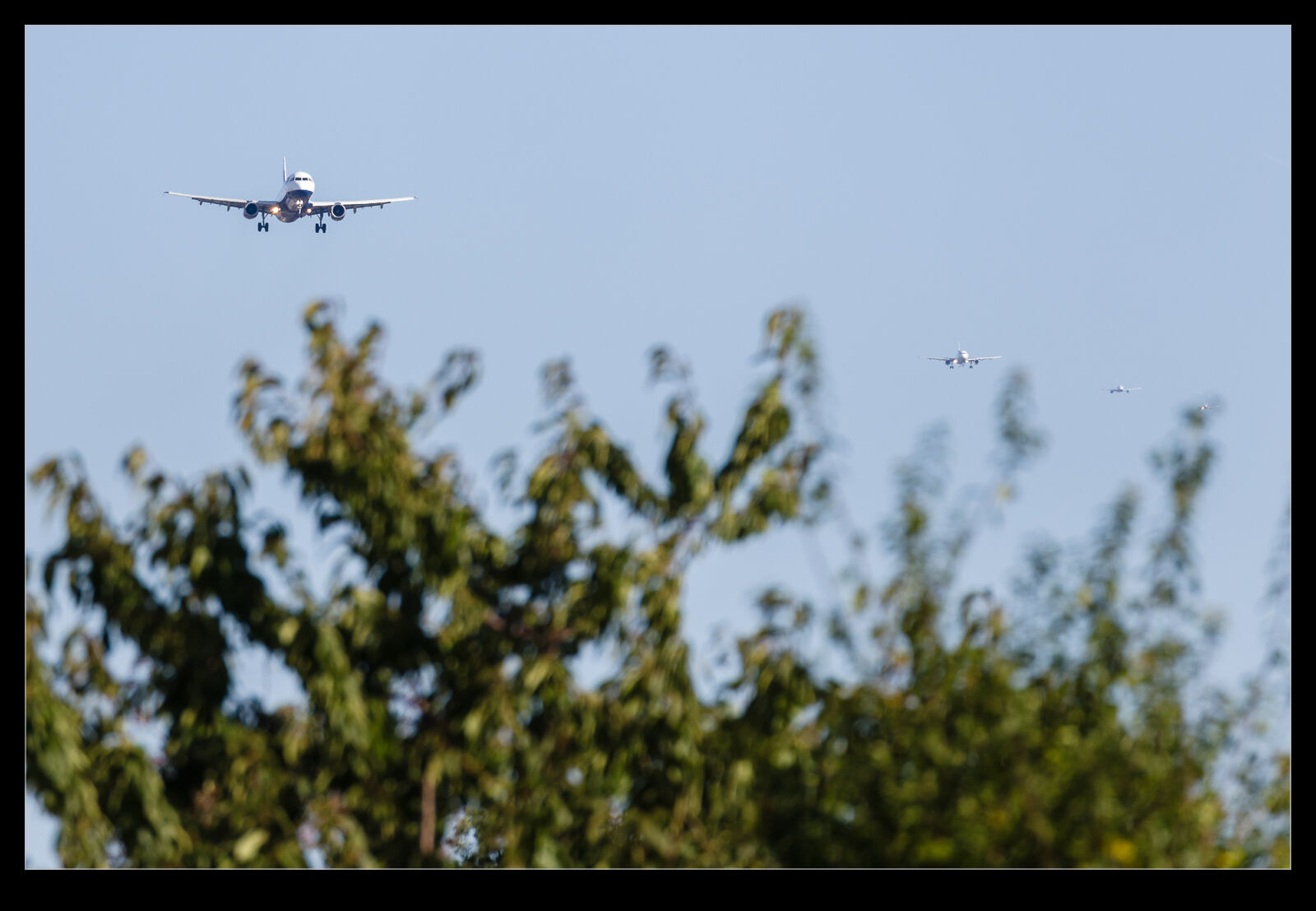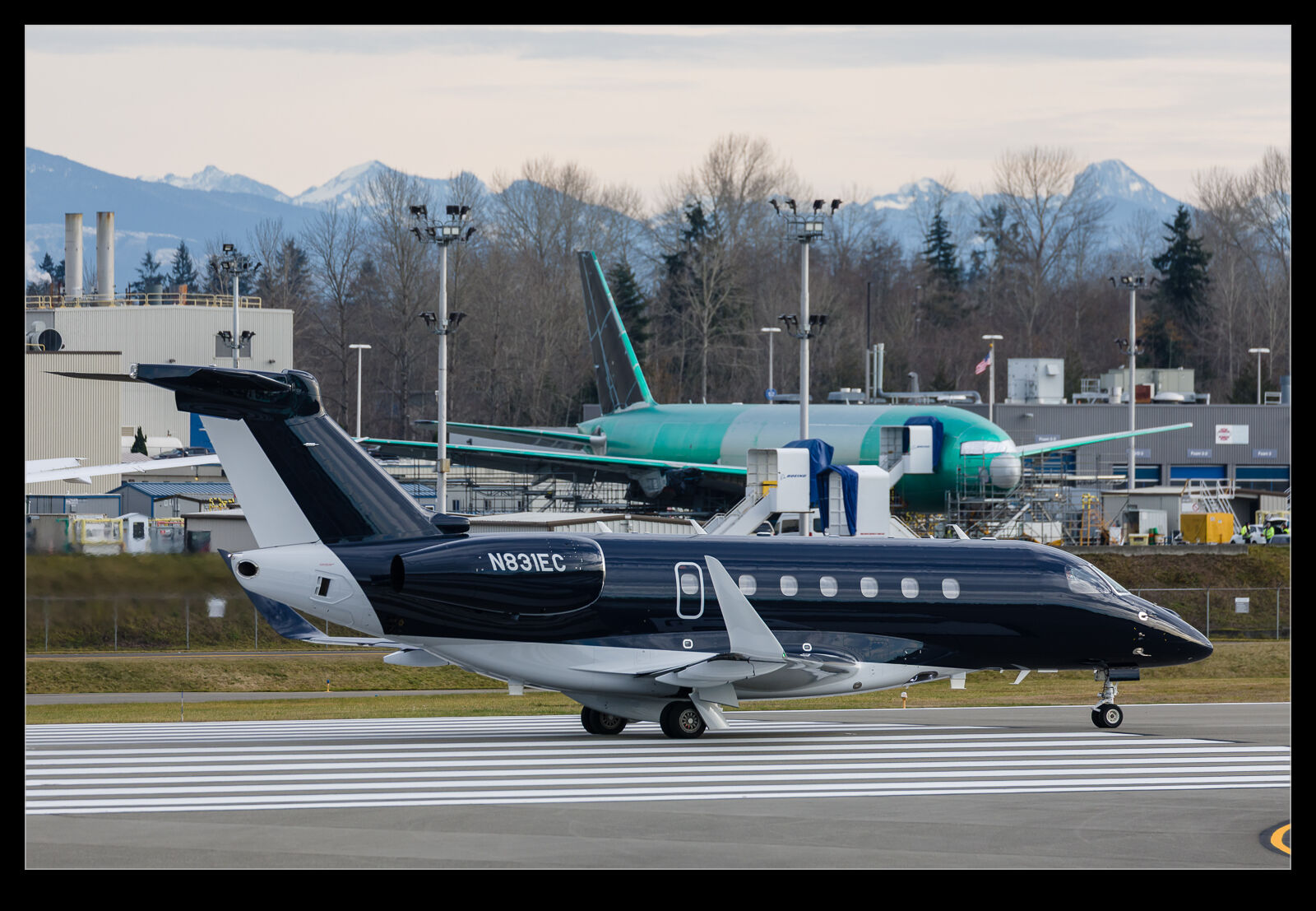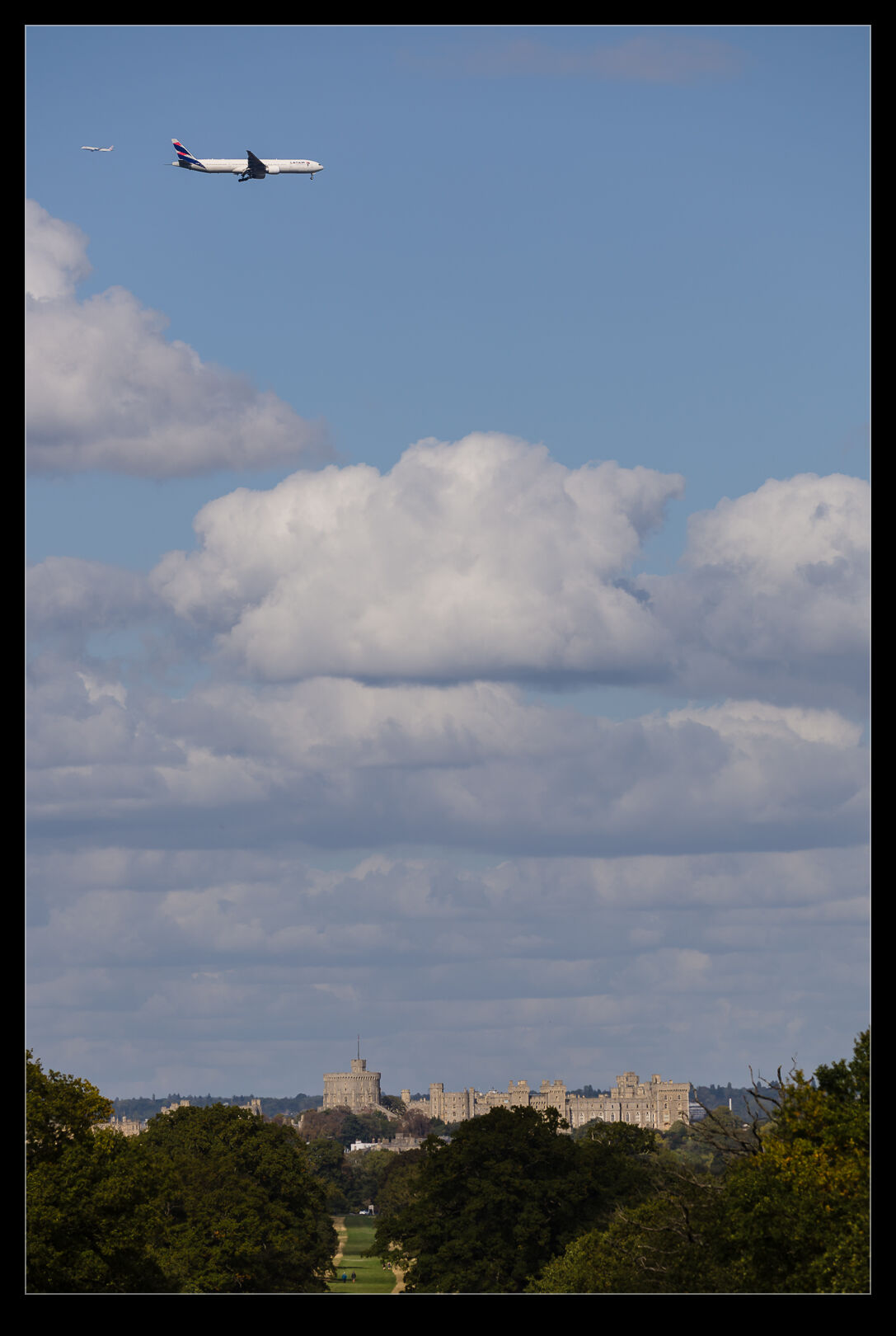 Our day out in Windsor was not about photographing aircraft. However, the place is so close to the flightpath for Heathrow that I could hardly avoid the things. When in the town, we had a few pass very close by and it would have been churlish not to grab a shot or two. Later, as we walked through the Great Park, the jets on approach to Heathrow were visible above the castle as they were on final approach. Rather distant for a clear shot but still worth a pop.
Our day out in Windsor was not about photographing aircraft. However, the place is so close to the flightpath for Heathrow that I could hardly avoid the things. When in the town, we had a few pass very close by and it would have been churlish not to grab a shot or two. Later, as we walked through the Great Park, the jets on approach to Heathrow were visible above the castle as they were on final approach. Rather distant for a clear shot but still worth a pop.
Tag Archives: civil
Crossing of the Contrails
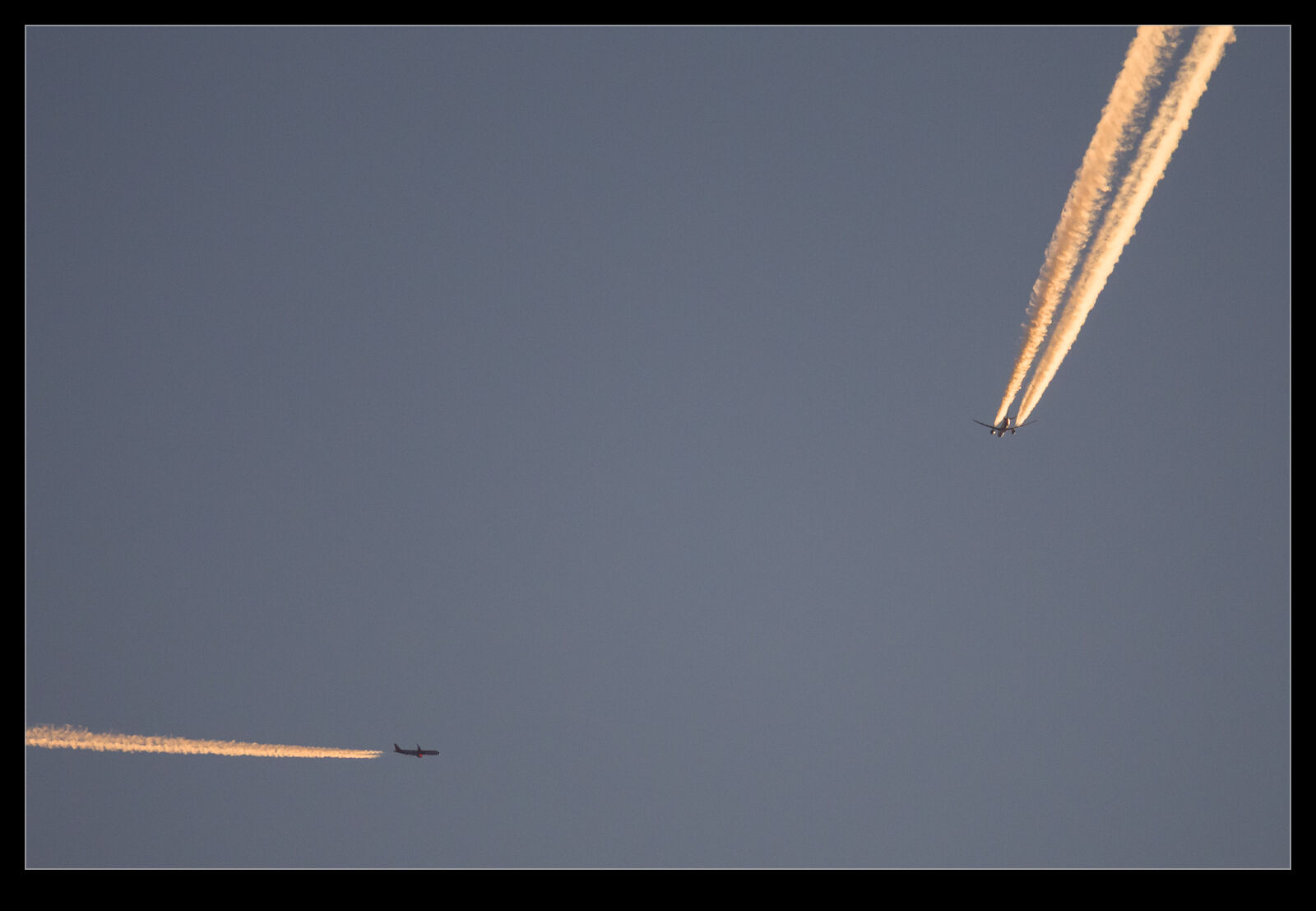 Another of my early morning walks and I looked up at an aircraft contrailing across the sky above me. The low sun angle made the textures of the contrail look good, so I took a few shots. A short while later, I realised that its direction of travel was taking it towards another jet that was crossing its path. I was hoping for the relative positions of the two jets to look like a perfect cross from where I was standing but it wasn’t to be. Even so, they did look like they were crossing quite close.
Another of my early morning walks and I looked up at an aircraft contrailing across the sky above me. The low sun angle made the textures of the contrail look good, so I took a few shots. A short while later, I realised that its direction of travel was taking it towards another jet that was crossing its path. I was hoping for the relative positions of the two jets to look like a perfect cross from where I was standing but it wasn’t to be. Even so, they did look like they were crossing quite close.
Festival of Flight Other Stuff
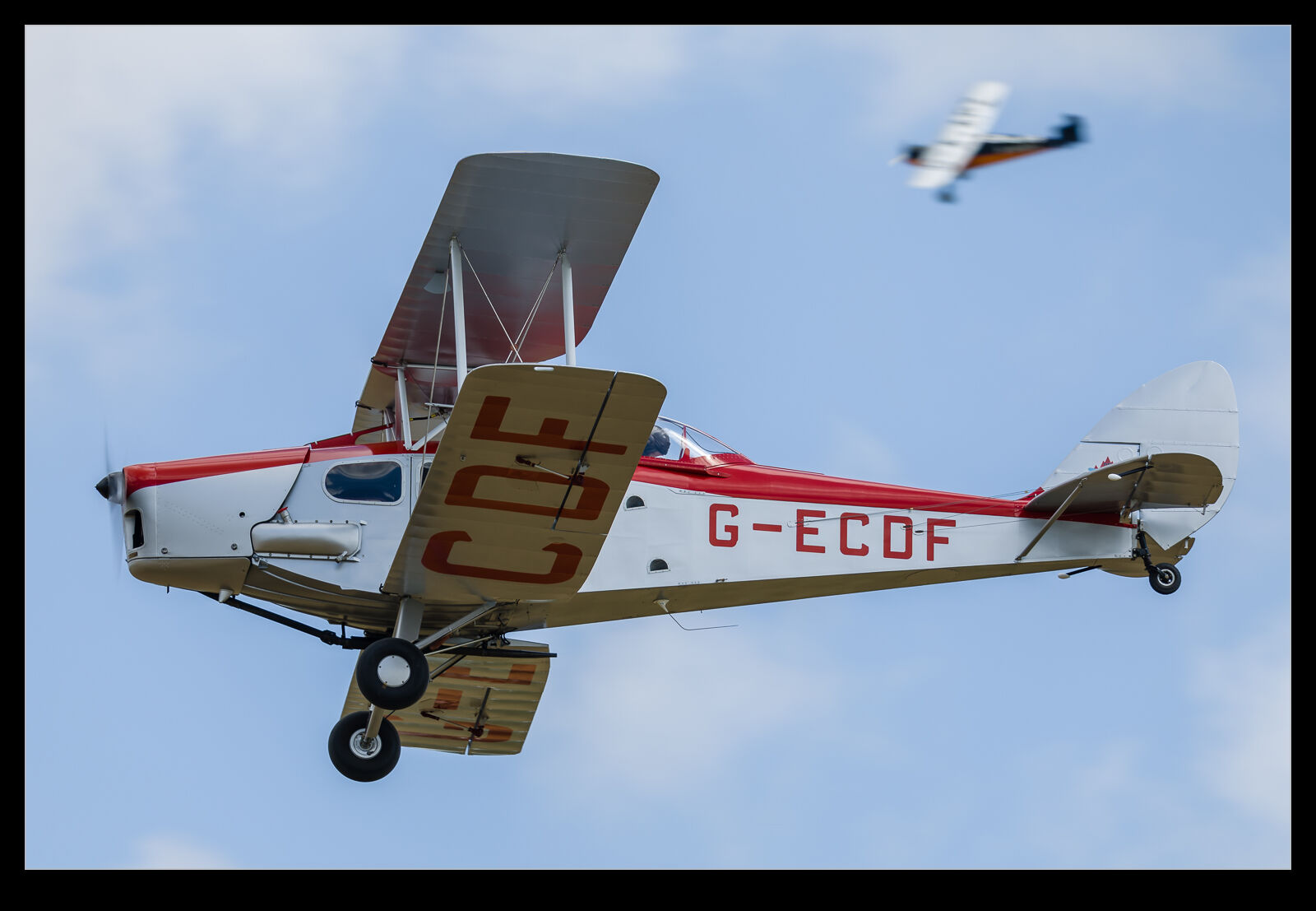 There have been a few posts of specific aircraft from the Shuttleworth’s Festival of Flight this summer. While those planes were of specific interest to me, there was an extensive display with many other types of planes taking part. Some of these were familiar types but some were new to me. This included variants of the de Havilland Moth family and an old Sopwith. I have run through the many shots I took that day and here is a selection of images of the displays although by no means a comprehensive one!
There have been a few posts of specific aircraft from the Shuttleworth’s Festival of Flight this summer. While those planes were of specific interest to me, there was an extensive display with many other types of planes taking part. Some of these were familiar types but some were new to me. This included variants of the de Havilland Moth family and an old Sopwith. I have run through the many shots I took that day and here is a selection of images of the displays although by no means a comprehensive one!
Wimbledon Special Emirates Climbing Out of Manchester
 We were walking through the grounds of Tatton Park on a recent visit and I was carrying a long lens with me to be ready for the deer that roam the park. However, that was also handy given that the airliners climbing out of Manchester Airport came near us. The conditions were not good for plane photography to be honest. The clouds were often low enough that we never saw the planes but, at one point, I did get a good view of an Emirates A380 climbing overhead and turning in our direction. It had the new Emirates livery combined with special markings for Wimbledon’s tournament earlier this year. A bit of processing was necessary to get it to a reasonable shape.
We were walking through the grounds of Tatton Park on a recent visit and I was carrying a long lens with me to be ready for the deer that roam the park. However, that was also handy given that the airliners climbing out of Manchester Airport came near us. The conditions were not good for plane photography to be honest. The clouds were often low enough that we never saw the planes but, at one point, I did get a good view of an Emirates A380 climbing overhead and turning in our direction. It had the new Emirates livery combined with special markings for Wimbledon’s tournament earlier this year. A bit of processing was necessary to get it to a reasonable shape.
Glasgow Airport Brings Some Variety (At Least for Me)
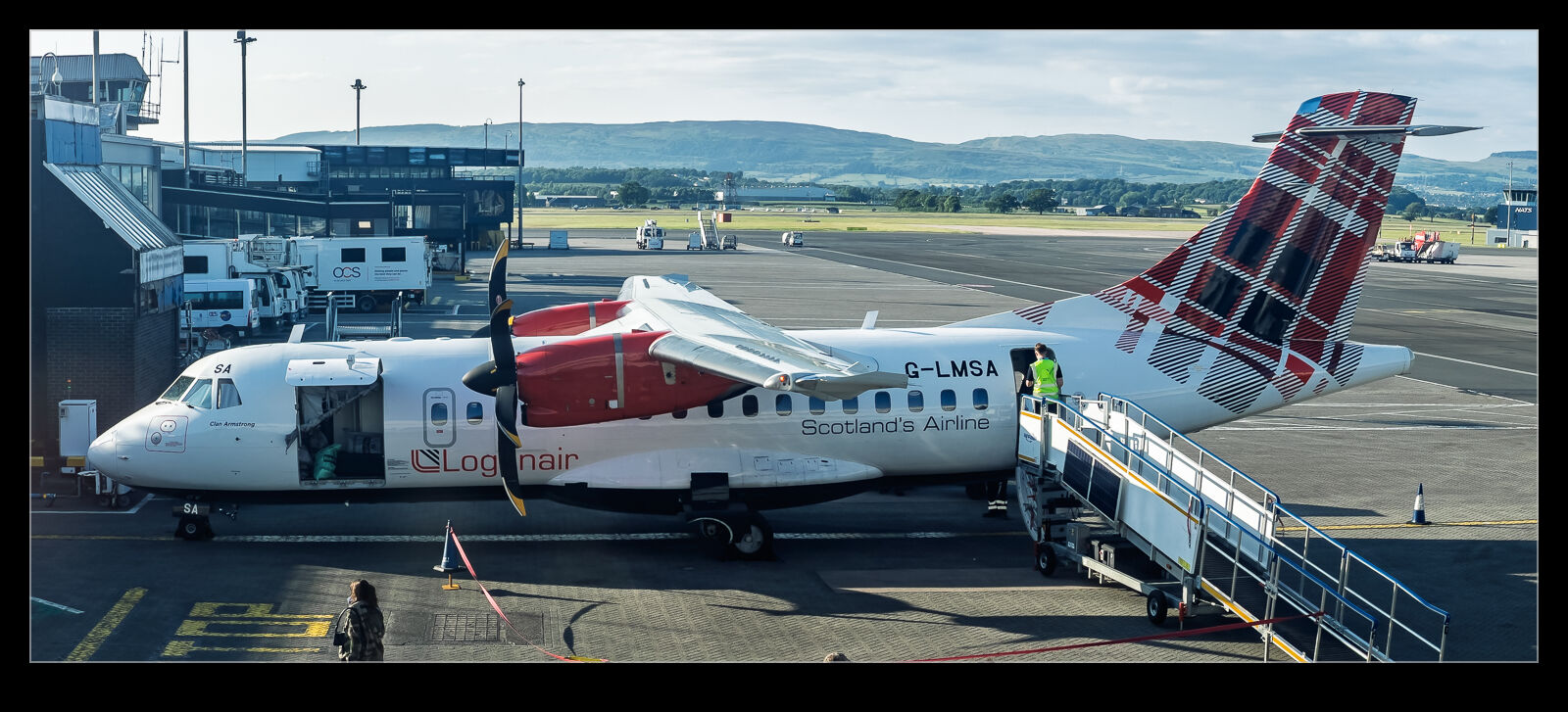 I have had to make a few trips to Glasgow recently and, while some of them involved the train up, I did also fly on occasion. This meant I had some time at Glasgow Airport waiting for my flight home. British Airways and EasyJet are regular features at Glasgow so nothing new about them. However, you get some visitors from Europe and Loganair has a number of turboprops based there so this was a nice chance to see something different to the norm (although I get plenty of ATRs passing the house).
I have had to make a few trips to Glasgow recently and, while some of them involved the train up, I did also fly on occasion. This meant I had some time at Glasgow Airport waiting for my flight home. British Airways and EasyJet are regular features at Glasgow so nothing new about them. However, you get some visitors from Europe and Loganair has a number of turboprops based there so this was a nice chance to see something different to the norm (although I get plenty of ATRs passing the house).
What’s on This Azerbaijan 777’s Fuselage?
 We had an excellent time walking through Windsor Great Park and, while I wasn’t there chasing aircraft, there were a few opportunities to get images of some of the arrivals into Heathrow in the distance. One of these was an Azerbaijan Boeing 777. I grabbed a couple of shots of it as it came over Windsor in the distance and then thought nothing further about it. However, when I started to look through my shots, I noticed some interesting lumps and bumps on the fuselage. My thoughts were immediately that they were some form of defensive countermeasures but if anyone has any other thoughts, I’d be interested to hear them.
We had an excellent time walking through Windsor Great Park and, while I wasn’t there chasing aircraft, there were a few opportunities to get images of some of the arrivals into Heathrow in the distance. One of these was an Azerbaijan Boeing 777. I grabbed a couple of shots of it as it came over Windsor in the distance and then thought nothing further about it. However, when I started to look through my shots, I noticed some interesting lumps and bumps on the fuselage. My thoughts were immediately that they were some form of defensive countermeasures but if anyone has any other thoughts, I’d be interested to hear them.
VC-10 Time
 Our visit to the Brooklands Museum meant were were at the home of the Vickers VC-10. The museum has a complete example along with another fuselage and some test items related to the development of the aircraft that was undertaken here. The complete airframe belonged to the Sultan of Oman and it was flown into Weybridge in the late 80s before the runway was rendered unavailable. It was quite a luxurious configuration in its day but does have a rather basic look compared to what might be available today.
Our visit to the Brooklands Museum meant were were at the home of the Vickers VC-10. The museum has a complete example along with another fuselage and some test items related to the development of the aircraft that was undertaken here. The complete airframe belonged to the Sultan of Oman and it was flown into Weybridge in the late 80s before the runway was rendered unavailable. It was quite a luxurious configuration in its day but does have a rather basic look compared to what might be available today.
The Approach Is Busy
 Back to a time earlier this year when I made a trip to Heathrow for a brief bit of shooting. Most of the time, I was offset from the approach path to get shots of the jet as they were on short final approach. However, I did walk along to the approach lights to get some head on shots. While there were more about getting a tight angle on the jets and some underside shots, it did also allow me to look back up the approach and see a number of jets on the glideslope or turning to line up. Heathrow is a busy place so there always seem to be jets on approach.
Back to a time earlier this year when I made a trip to Heathrow for a brief bit of shooting. Most of the time, I was offset from the approach path to get shots of the jet as they were on short final approach. However, I did walk along to the approach lights to get some head on shots. While there were more about getting a tight angle on the jets and some underside shots, it did also allow me to look back up the approach and see a number of jets on the glideslope or turning to line up. Heathrow is a busy place so there always seem to be jets on approach.
Black Jets Look Better
Apparently, This Helicopter is Very Rare
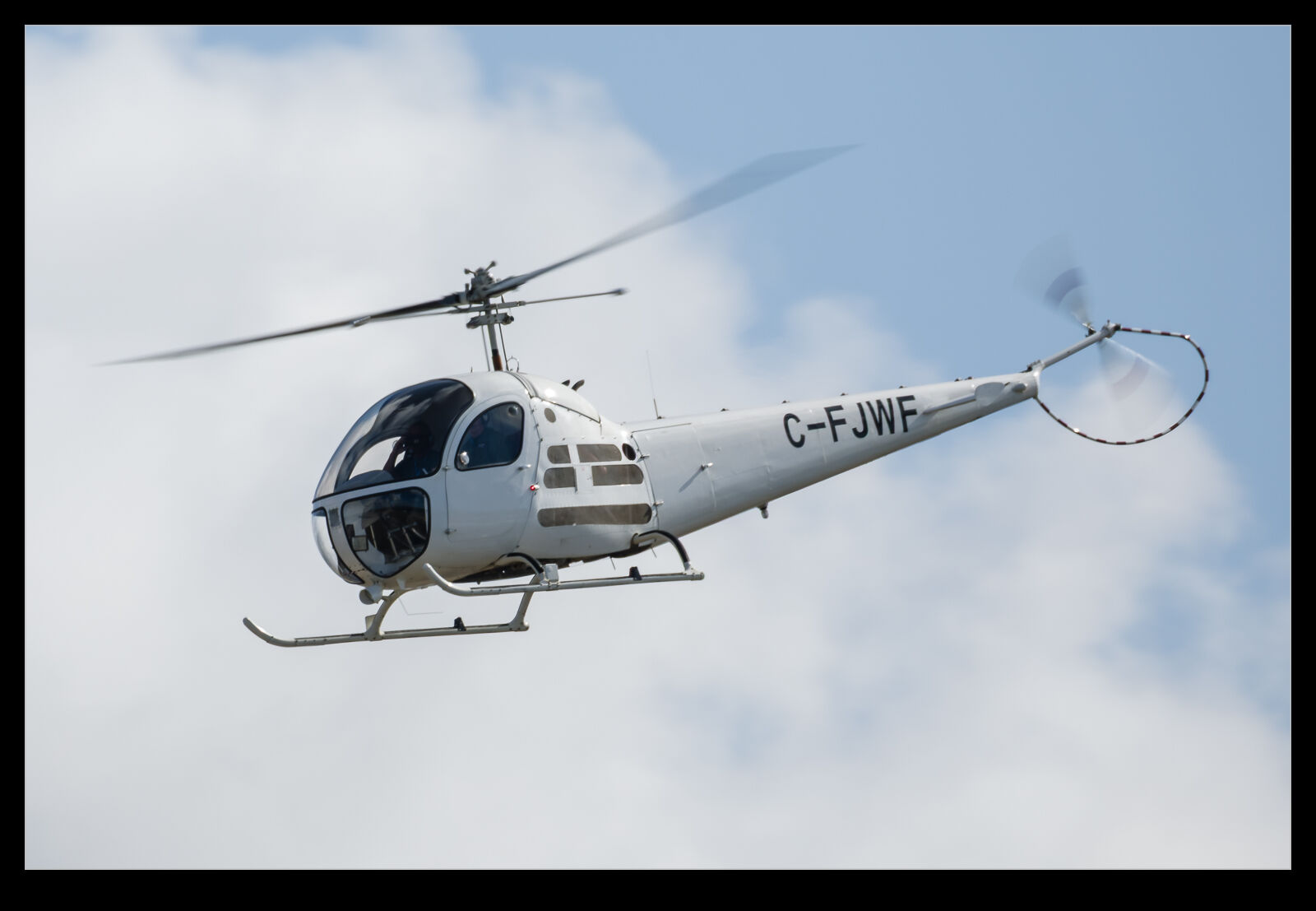 While the majority of aircraft that appear at RIAT are military, you do get some civilian types that show up as well. This year, one of these was a Canadian registered Bell 47. This airframe is a Bell 47H-1 which I am informed is a pretty rare member of the larger family. No idea whether this is true or whether these things are common as muck. I certainly haven’t got a pile of shots of similar airframes but that is hardly proof. Given that it is registered in Canada, I am not sure how much time it is spending in the UK, but it was here and flying so that’ll do!
While the majority of aircraft that appear at RIAT are military, you do get some civilian types that show up as well. This year, one of these was a Canadian registered Bell 47. This airframe is a Bell 47H-1 which I am informed is a pretty rare member of the larger family. No idea whether this is true or whether these things are common as muck. I certainly haven’t got a pile of shots of similar airframes but that is hardly proof. Given that it is registered in Canada, I am not sure how much time it is spending in the UK, but it was here and flying so that’ll do!
